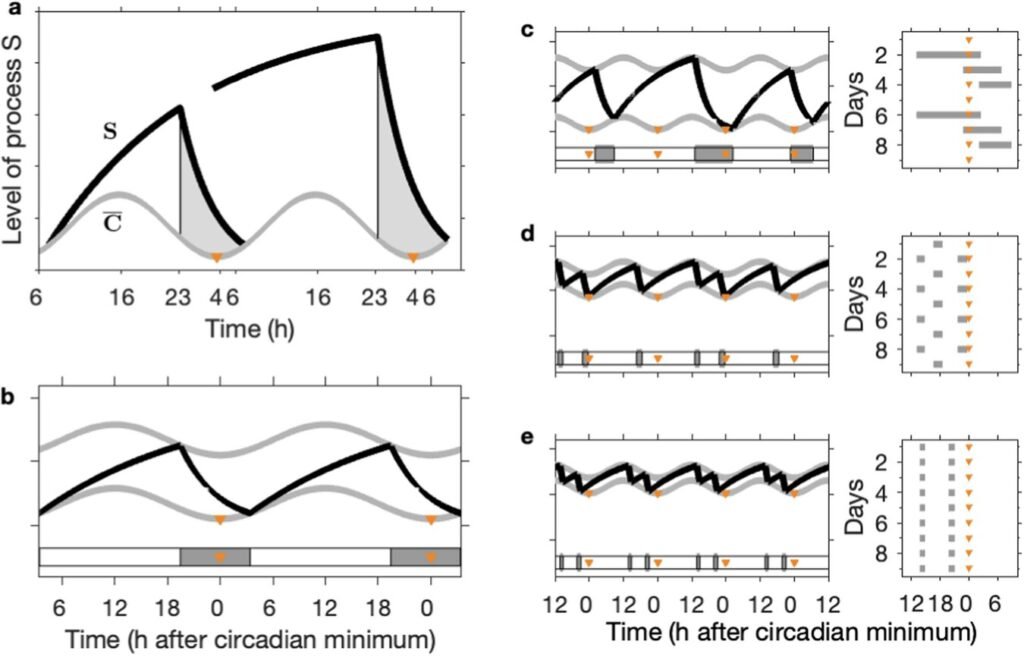Mathematical modeling of sleep regulation has provided some fascinating insights into the reasons behind common sleep patterns and disturbances. A recent study from the University of Surrey delves into the intricacies of the two-process model (2PM) of sleep regulation, shedding light on why babies nap on some days, teenagers sleep late, and older adults wake up early.
The 2PM, first proposed in the 1980s, explains how our sleep patterns are influenced by two main factors – the pressure to sleep that builds up the longer we are awake and diminishes during sleep, and the near 24-hour rhythm of our internal body clock. Using mathematical analysis, researchers at Surrey have shown how this model accurately reflects the brain’s transitions between sleep and wakefulness.
One of the intriguing findings of the study is how the 2PM can elucidate the “Devil’s staircase” phenomenon observed in babies, where napping patterns vary on different days. By integrating the mathematics of sleep-wake switching with the effects of light on the biological clock, the researchers were able to explain how environmental factors play a crucial role in shaping our sleep habits.
For instance, teenagers’ tendency to stay up later and wake up later than younger children can be attributed to a slower rise in sleep pressure during wake states, coupled with exposure to bright light in the evening. Contrary to common belief, waking up earlier in old age may not be solely governed by changes in the body clock but could result from the complex interactions between various sleep-controlling systems.
The study’s lead author, Professor Anne Skeldon, emphasizes the potential of mathematical models in understanding and addressing sleep problems. By pinpointing the impact of light, routine, and biology on our sleep cycles, these models pave the way for personalized interventions that can enhance overall sleep quality.
Through mathematical simulations, the researchers have demonstrated how disruptions in the sleep-wake oscillator, body clock oscillations, and light-dark patterns can lead to irregular sleep patterns. This insight offers valuable guidance for individuals struggling with modern lifestyle constraints, aging-related sleep disturbances, or health conditions affecting sleep.
In conclusion, the study underscores the power of mathematics in unraveling the complexities of sleep regulation and offering tailored solutions for improving sleep patterns. By leveraging data-driven models, researchers aim to provide more nuanced advice and innovative interventions to support better sleep health for all individuals.


